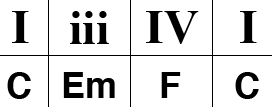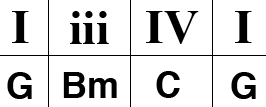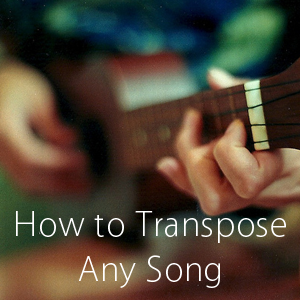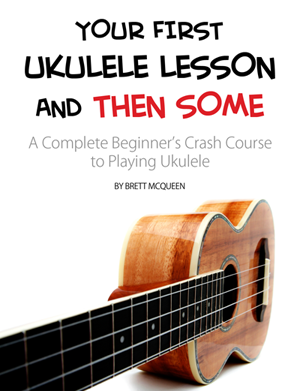Today, I’m going to teach you one of the most important skills you can possess when it comes to playing ukulele (or any type of music for that matter): how to transpose a song.
There are many reasons why you would want to transpose a song.
Reason #1: Singability
Have you ever tried playing a song on the ukulele but found it to be impossible to sing along with because the key was either too high or too low? To fix this problem, you might transpose or change the key of the song or chord chart to make it easier to sing.
Reason #2: Playability
A lot of songs are written in weird keys like Eb, F#, or Db. The chords found in these keys aren’t the easiest to play on ukulele, so you might transpose the song to a different key with easier chords.
Reason #3: Creativity
Transposing allows you to be really creative. You might transpose a song to get a specific tone from a different set of chords. You also need to transpose a song if you’re trying to arrange two different songs to flow together in the form of a medley (e.g. Somewhere Over the Rainbow –> I’m Yours).
You never know when you might need to change the key of a song, so let’s take a look at an easy formula for how we can do this.
How to Transpose a Song
First of all, transposing a song is not hard. However, we do have to familiarize ourselves with some basic music theory in order to do it well. For this lesson, you’ll want to make sure you are familiar with how major scales are formed.
For those of you who are lazy (it’s okay), I have included a cheat sheet at the bottom of this lesson. I encourage you though to continue reading, because if we know these basic concepts, we can transpose any song in our head in just seconds.
Roman Numeral Analysis
When I transpose a song, I use a really common technique called roman numeral analysis. This means that every chord in a song has a specific roman numeral that can be assigned to it.
Awhile back, I wrote a post called Ukulele Scales Explained for Beginners. In that post, we learned that the major scale is the most popular scale used in music today. As we looked at how a major scale is formed, we learned that there are seven notes in the scale.
For the purposes of this lesson, you need to know that we can take each of the seven notes in a major scale and build a chord off of each note using the other notes in the scale.
I’m not going to get into the theory of how those chords are built, but the most important thing to know is that in any given key, there are seven main chords. Some chords will be major in quality, and others will be minor in quality. In a major key, one chord will be diminished. (Click here to learn more about different chord qualities.)
For a major scale, we can represent all seven chords in roman numerals:
An important note to add is that just because we are dealing with major keys doesn’t mean that all the chords within that key are major. A major key will have a combination of major, minor, and diminished chords.
In the chart above, major chords are represented in uppercase. Minor chords are represented in lowercase. The lowercase chord with a superscript circle is a diminished chord.
So for example, let’s take the notes of a C major scale, in ascending order (C, D, E, F, G, A, B), and “plug” them into the above roman numerals. This will give us the chords used in the key of C major.

We can do this with any key assuming we know the notes found in a particular major scale.
Putting It All Together
When we think about chords in terms of roman numerals, we are able to easily change or transpose the key of a song.
For example, let’s say we have a song in the key of C major, but we want to play it in the key of G major. Let’s use Somewhere Over the Rainbow as an example.
The first four chords of the verse in Somewhere Over the Rainbow are C, Em, F, and C. However, we want to transpose these chords to the key of G.
First, let’s represent those four chords in the key of C major as roman numerals. I’m simply referring to the chart directly above.

This means that the first four chords in the verse of Somewhere Over the Rainbow are a I, iii, IV, and I chord.
Since we want to transpose to G major, we need to know how the chords in G major are represented as roman numerals. If we build a major scale, we know that the seven notes in a G major scale are G, A, B, C, D, E, and F#.
Let’s plug those notes into our roman numerals like we did for our C major scale.

As we can see, the I, iii, and IV chords in the key of G major are G, Bm, and C.

We have successfully transposed the first four chords of Somewhere Over the Rainbow from C major to G major! I’ll let you transpose the rest of the chords for the song from here.
Transposing Cheat Sheet
Learning to see chords as roman numerals is the best way to be able to transpose a song. If you’re just beginning to get a feel for all this, it can be a bit overwhelming to try to figure out the notes and chords for every major scale (there are a total of twelve!).
This is why I’ve created this cheat sheet for you to reference whenever you need to change the key of a song. Enjoy!
Key | I ii iii IV V vi viiº
C major | C Dm Em F G Am Bdim
Db major | Db Ebm Fm Gb Ab Bbm Cdim
D major | D Em F#m G A Bm C#dim
Eb major | Eb Fm Gm Ab Bb Cm Ddim
E major | E F#m G#m A B C#m D#dim
F major | F Gm Am Bb C Dm Edim
F# major | F# G#m A#m B C# D#m E#dim
Gb major | Gb Abm Bbm Cb Db Ebm Fdim
G major | G Am Bm C D Em F#dim
Ab major | Ab Bbm Cm Db Eb Fm Gdim
A major | A Bm C#m D E F#m G#dim
Bb major | Bb Cm Dm Eb F Gm Adim
B major | B C#m D#m E F# G#m A#dim
How’s the transposing going for you? Do you have any questions? What tips do you have for transposing songs? Post your comments below.


